Recently I was able to put my hands on the most beautiful cherry red sea buckthorn oil from one of my suppliers. I was finally able to see and experience the difference between the two oils of sea buckthorn.
It is one of the oils I find fascinating because, sea buckthorn is one of the few plants that produces two separate oils.
I want to look at these two wonderful, and very different oils from the sea buckthorn berry, and then take a look at a two other plants that give us two different oils as well.
Sea Buckthorn Seed Oil & Berry Oil
Most of the seed oils we use come from a single plant. The plant produces one seed, and that seed is what is pressed for the rich oil inside. But some plants give us two oils, one from the actual seed, and one from the fruiting body around the seed. The avocado oil you buy for your kitchen, it’s not a seed oil from the avocado pit, it’s oil pressed from the fleshy (and totally yummy) avocado flesh around the hard pit inside. Same with olive oil. We use oil pressed from the fruit around the olive seed rather than oil pressed from the pit itself. Olive and avocado pit oils do exist, but they are hard to find and generally not food quality. And the sea buckthorn oil I was experimenting with the other day, that beautiful cherry red oil was sea buckthorn fruit oil, very different from sea buckthorn seed oil.
One plant two separate oils, I call them bifurcated oils, as bifurcate means divided into two.
One Plant Two Oils: Bifurcated seed oils
Pulp oils are the oils pressed from seeds with two lipid sources, the oil rich fruit around the seed or pit, and the actual pit inside. Botanically the exocarp is the outer husk, the hard skin around an avocado for example. Inside we have the mesocarp, the fleshy fatty avocado itself, and inside that we have the endocarp, the hard pit or kernel that the fruit and husk encloses. In my book, the Power of the Seed, I describe them as “fruiting bodies where oil extracted from both the fruit and the pit or hard seed stand as separate oils”.
Olive, Avocado and Sea buckthorn, three plants, six oils! Let’s take a look at these abundant oil sources in nature.
Olive Oil vs Pomace Olive Oil
Olive oil and olive pit oil have very similar fatty acid profiles, but of the three oils we are looking at today, this is the only place this is true. Typically bifurcated oils have very different fatty acid profiles.
Olive oil is the exception rather than the rule.
Pomace oil is extracted using solvents and high heat to squeeze out the last bit of oil from the pile of plant material after the extra virgin and virgin olive oils extracted. It’s not a suitable food quality oil but it is a cost effective choice for soap making.
Avocado Oil vs Avocado Seed Oil
Unlike olives, which produce two very similar oils from the flesh and the pit, avocado oil and avocado pit oil are very different oils with a separate fatty acid profiles. I’ve never seen avocado pit oil offered for sale; it is said to be extremely bitter and so would not have any culinary uses, perhaps the reason it is so rare.
Avocado fruit, or pulp oil is high in omega 7 palmitoleic acid, one of those fatty acids that shows up in seed oils and is also made in the skin. As skin ages though, it produces less omega 7 palmitoleic acid. Avocado oil, and other oils that have this naturally occurring fatty acid are exceptional for mature skin and highly sought after by formulators. Avocado oil is a great source of palmitoleic acid at 10% of the total oil.
Below is a pie chart depicting the fatty acid profile of avocado oil (from the flesh rather than the seed). On the right is two avocado oils, both from the avocado flesh, showing how much the color can vary between batches and levels of refinement.
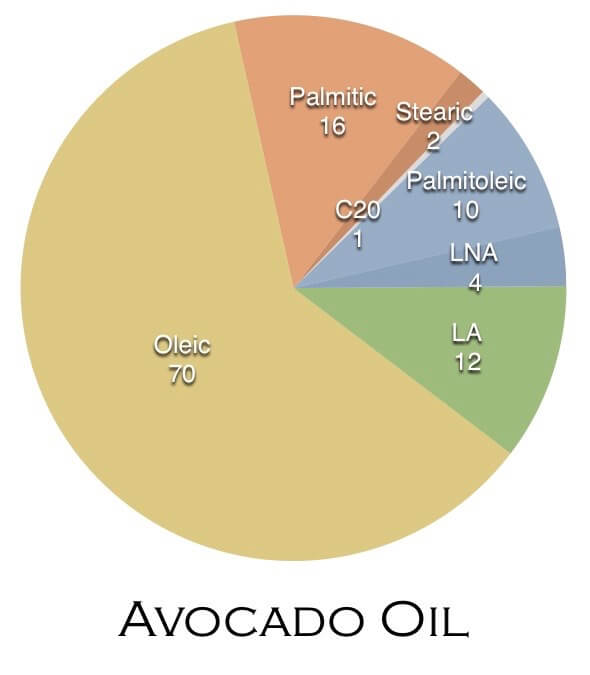
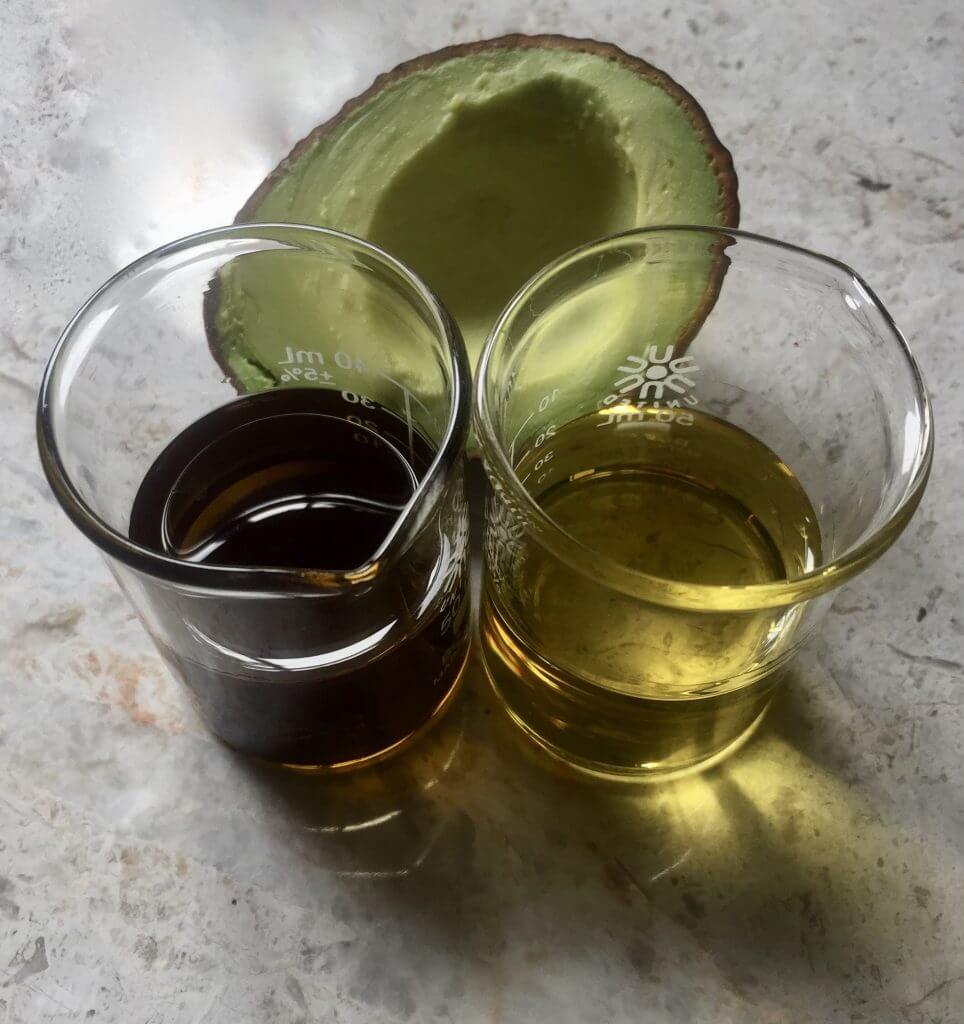
The Two Sea Buckthorn Oils
Unlike olives, which produce two oils with similar fatty acid profiles, or avocado which only produces one currently available oil, sea buckthorn produces two highly valuable skin care oils. The bright red berry oil, and an amber seed oil are amazing contributions to the world of skin care.
Sea Buckthorn berries are an oily fruit enclosing hard seeds and we can press separate oils from each.
The two oils are very different from each other and both are exceptional for skin care.
Sea buckthorn seed oil is very much like a polyunsaturated berry oil with high percentages of linoleic and alpha-linolenic acids, the two essential fatty acids, EFA’s. It is a pale amber color and can be used as a stand alone oil.
The soft orange berry however, produces an oil that is extremely high, highest I’ve seen in plant oils, in omega 7 palmitoleic acid at 34%. As we talked about with avocado oil, this is an important skin fatty acid and sea buckthorn berry oil is an exceptionally rich source.
With so much omega 7 palmitoleic acid, it’s tempting to slather it on and add it in large doses to skin care formulas, but the oil itself is a bright cherry red. The high amount of color in the oil makes it one you want to dilute in other oils or use in small percentages in a formula. Using the oil full strength won’t harm the skin, but it will add a lot more color to your complexion than you probably want!
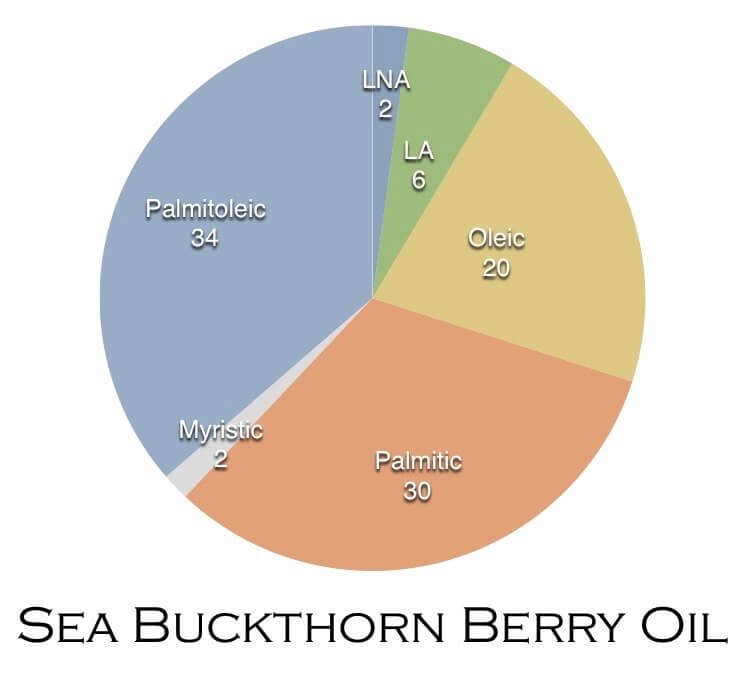
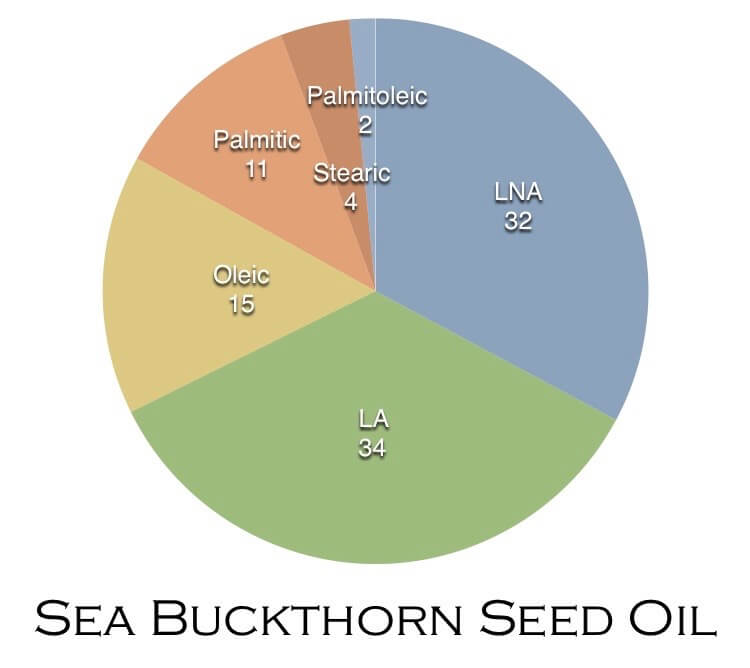
Beyond simply oil geek knowledge
Why, you might ask, is this valuable information to know? Beyond general oil geek knowledge, seeing how two oils, from the same plant, can be so different is an important part of choosing using oils in formulas and recipes.
If you bought sea buckthorn seed oil, looking for the exceptional skin healing properties of the omega 7 palmitoleic acid, you would be left with a wonderful oil, but not the oil you thought you were getting.
The fatty acids that make up the oils impact the skin in different ways. We need to know what an oil is made up of, the range of fatty acids in that oil, to fully understand how to use it effectively.
I love these bifurcated oils because they offer us unusual examples of oils that give us choices and variations, and show nature’s abundance and unique offerings on display.


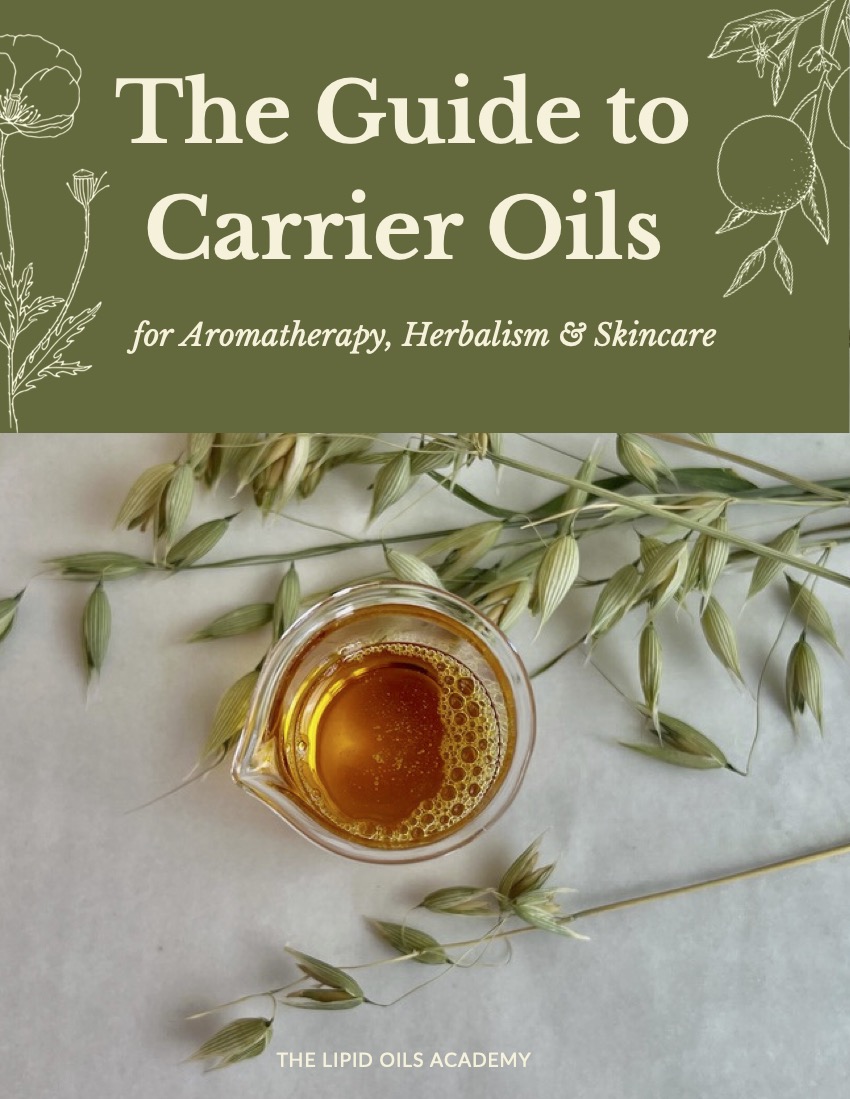
I recently purchased one version called “Sea Buckthorn Fruit Oil CO2” here in Canada and it’s rich in colour red so i’m assuming as you suggest the “berry” oil, but i’m wondering if they have the description correct, as their usage rate is quite high at 5-10%? And why would it be called a CO2? Thank you Susan, you’re a wealth of information!
There are the two oils in the sea buckthorn fruiting berry – the seed and the berry or fruit. It is the latter that is redder and more highly colored. So that sounds like what you purchased. As a carrier, it could be used at 100% except for its strong color. It would be safe at any percentage. And it sounds like it is extracted by the carbon dioxide method, CO2 – that method extracts both the volatile compounds – essential oils – and the lipid compounds, the carriers.
Your information on fixed oils is rich. I will be ordering your book. But, your snippets of knowledge will not be overlooked.
May Seeds Serum Prevail,
Anna